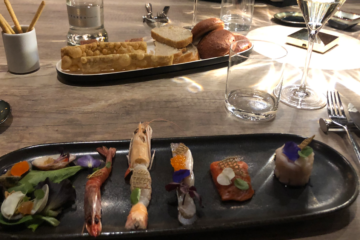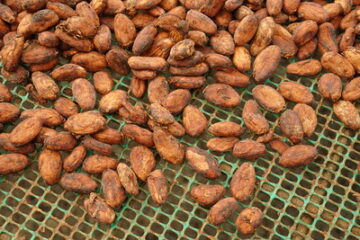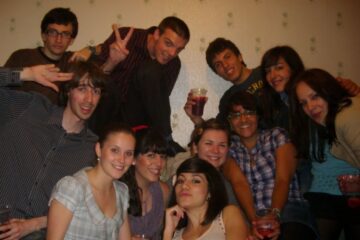Famous Turin Food: 15 Delicious Dishes you’ll love
This post may contain affiliate links. Please check our Affiliate Program disclosure for more information.
In this post you’ll find a short list of the best Starters, Main course, Second course and Desserts typical of Turin & loved by locals. You’ll see a short description of the dish, pictures and videos that allows you to understand what to expect. I also give tips on which restaurant I normally go to when I crave for a particular dish. These are very typical dishes, are hard to find outside Piedmont. Don’t miss them!
QUICK SUMMARY
Here are the quick links to the different sections of this post.
- Ristorante, Trattoria or Osteria?
- Top 5 Starters: not to miss
- Top 3 Main Courses: to die for
- The Best Second Course
- Top 5 desserts
- Wine suggestions
- Best Organized Food Tours
If you are planning to visit Turin, here is my recommended perfect one-day itinerary. If you are a real Foodie, don’t miss my post on the best Turin fine-dining experience.
If you’re after exceptional food and excellent wine, you may want to check our Barolo Wine Tour.
1. Ristorante, Trattoria or Osteria?
A lot of people may get confused when they go to Italy by the different variety of places in which you can go to eat. Let me help you make some clarity.
- Ristorante (high-tier): is the full-serviced restaurant with professional kitchen staff, a host to seat you and typically a sommelier. It the most expensive and the highest-end option.
- Trattoria (mid-tier): are traditionally family owned and more casual/rustic. The menu variety is more limited and typically focused on local food.
- Osteria (low-tier): in the past they used to be wine bars serving only wine, nowadays they also serve food but it is normally simpler than a Trattoria. They usually offer a variety of cold cuts and probably one or two dish choices from their daily menu
- Piola (low-tier): In Turin, you may come across the name “Piola” which is the traditional way for calling a Trattoria in local dialect.
Overall Trattoria’s and Osteria’s are cheaper than restaurants, having said that there are some exceptions.
For example, “Osteria Francescana” is a three Michelin-star restaurant managed by the famous Chef Massimo Bottura. It has been awarded multiple time as the best restaurant in the World (menu price ~250€ per person wine excluded).
Tips from locals:
The most popular Piola in Turin among locals is definitely “Piola da Cianci” I highly recommend this place as it offers good at very affordable prices. Be aware that no reservations are allowed. Here I took 2x mixed starters, 2x Main Course, 1x glass of red win, 1x Coca Cola, 1x Water and 2x coffees for 33 Euros!
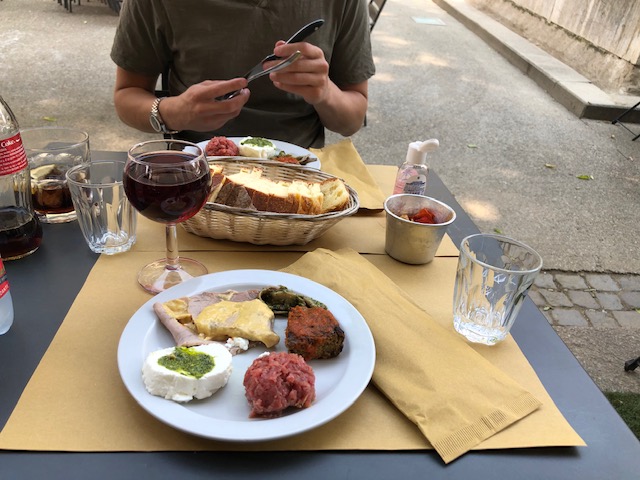
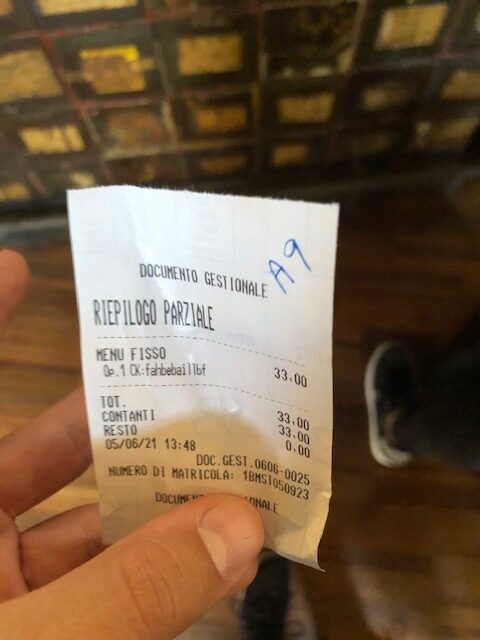
This restaurant is placed in a hidden but really nice square called Piazza IV Marzo, from which you can see the Duomo of Turin. You can have a better idea of how this Piazza looks like in the video below.
2. Starters: Top 5 dishes to try
Starters are probably my favorite part of the meal.
The variety of starters in Piedmont is huge to the point that some restaurants will offer you the possibility of choosing a dish of mixed starters to allow you to test them all. Starters are seasonal, cold starters are proposed mainly in the summer (Vitello Tonnata, Salsiccia di Bra) and warm ones in the winter (Peperoni al verde, Flan di verdura con foduta).
2.1 The Salsiccia di Bra
In short, it is sort of a high-quality raw beef tartare stuffed into a sausage. In reality, it is simply so much more.
I cannot describe this delicacy highly enough but if you are a meat lover you simply cannot miss this one. If you are not convinced by the description keep in mind that Bra is the name of the city where the SlowFood Worldwide international headquarter is based. It is the centre of true culinary elite. Trust me, they know what they are doing.
You can eat Salsiccia di Bra either as a starter (as per picture above) or as a part of a sauce for pasta or risotto.
2.2 Battuta al coltello di Fassona
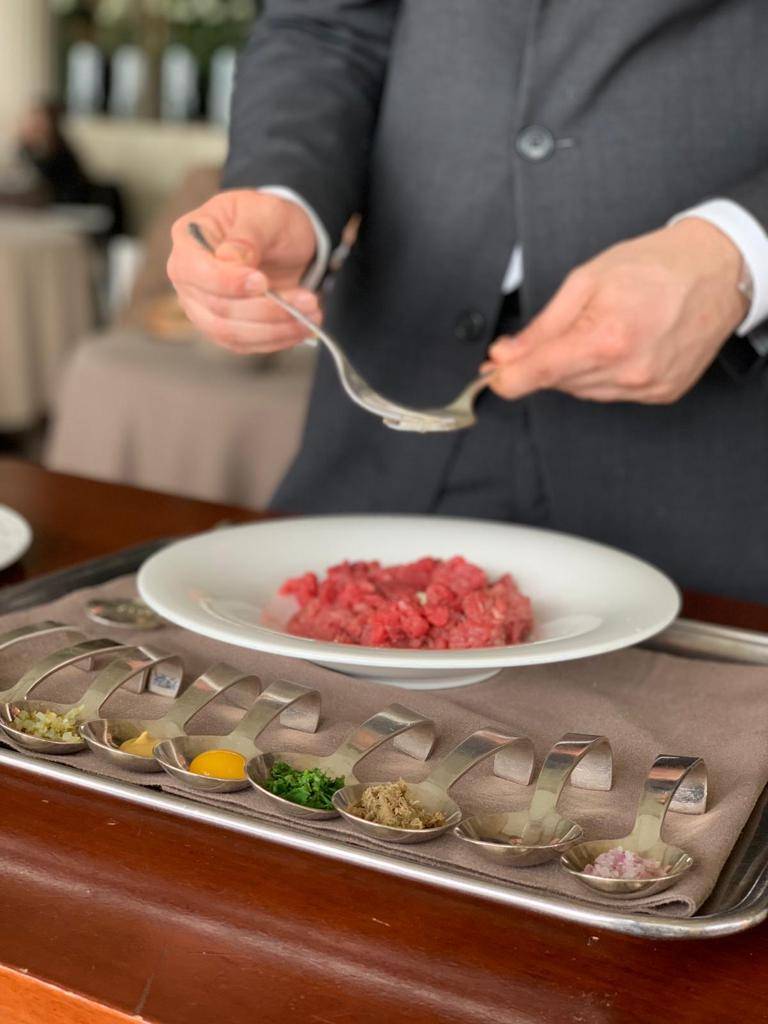
It is much more than a simple tartare.
Fassona is a specific high-quality breed of beef raised in Piedmont region, specifically fed with low connective tissue.
“Battuta al coltello” means that the meat has been “knife beaten” by hand. After been beaten, the meat is hand-chopped and lightly seasoned with salt, pepper and lemon.
The beauty of this dish is its simplicity, few ingredients, lightly seasoned not to overcome the flavour of the meat. It’s point of difference versus other Tartare is the quality of the meet. It has now been recognized as a SlowFood product.
It normally comes with flakes of parmesan cheese or with White Truffle .
2.3 Vitello Tonnato (or Vitel tonne’)
This is slices of veal served in a rich sauce of tuna, anchovies and cappers.
I get it, the combination of meet with a sauce based on fish seems awkward. I’m Italian and I am very traditional when it comes to food so trust me, I never ever combine the two ingredients (meat and fish) in the same dish. But I promise you, this dish is an exception it is just the perfect combination. You must try it.
As you can see from the picture the slices of veal needs to be a tiny bit rare, pink colored. The sauce is made of tuna, cappers, anchovies and lemon juice. The dish is served cold.
Local tips: My favorite place for Vitello Tonnato is at Porto di Savona .
2.4 Peperoni al forno in salsa di acciughe

This is oven baked peppers covered in anchovies’ sauce (bagna cauda sauce).
One of most beloved ingredients from Piedmont are bell peppers, as a matter of fact once a year there is the “Bell Pepper Festival” in the town of Carmagnola, in the outskirts of Turin.
The most traditional way of serving them is to roast them in the oven at high temperature to make them super tender and serving them with a dressing of anchovies, parsley and garlic (also called bagna cauda sauce).
Fun fact: be aware that peppers are called “peperoni” in Italian. So if you order a pizza with peperoni you will get bell peppers on the pizza, not salami!
Watch-out: while I strongly recommend to try Bell Peppers with “bagna cauda” sauce for starters make sure you DO NOT order the dish called “bagna cauda”. The latter is a traditional dish from Piedmont, it is basically a full meal dedicated to eating a variety of vegetables in the bagna cauda sauce (anchovies & garlic), it is very heavy and smelly. I don’t recommend this one at all. None of the younger generations eat the bagna cauda full dish.
2.5 Flan di verdure su fonduta di formaggio
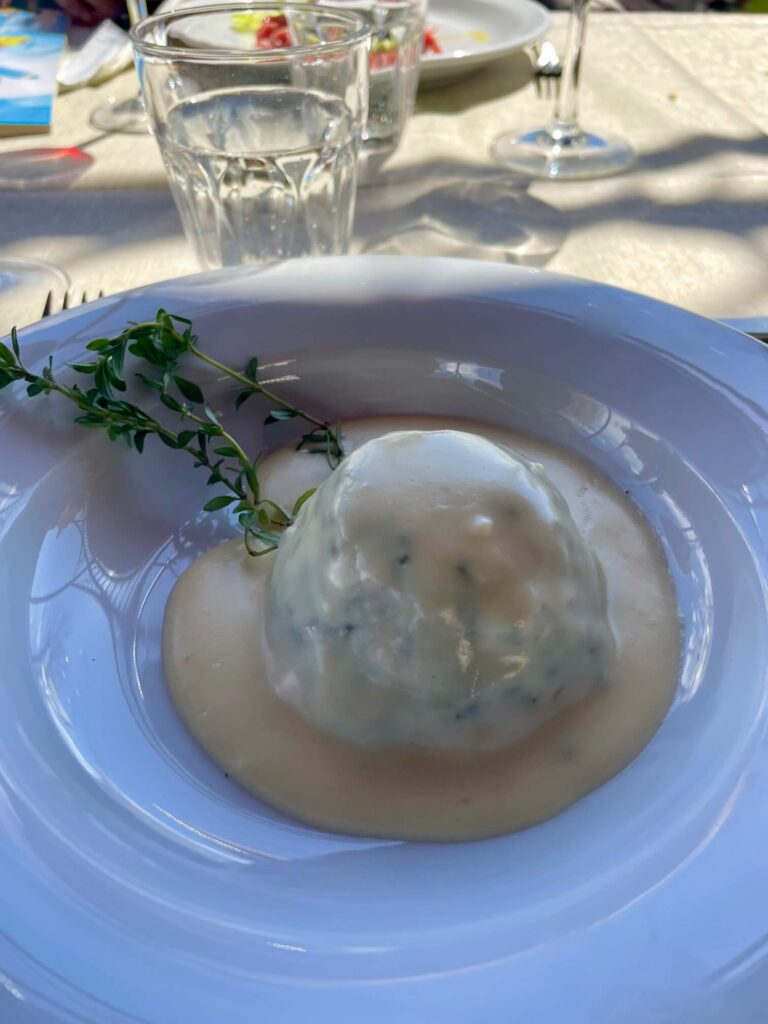
This one is an oven-baked souffle’ made with eggs and seasonal vegetable covered with a delicious local cheese souce.
The vegetables with which the souffle’ is made depends on the season, typically zucchini in spring or pumpkin/topinambur in autumn. The cheese used from the region are normally Castelmagno, Raschera or Seirass.
Tips from Locals:
A good place to try all starters at once is “Ristorante da Angelino”, with 10€ you have access to their table of “starters”. The place is down to earth and the decoration is a bit old style but the food is really worth it. In the 90s many Juventus players used to go there to eat, nevertheless the place is rather humble and with very accessible prices.
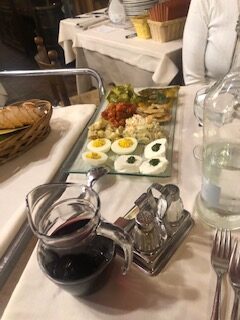

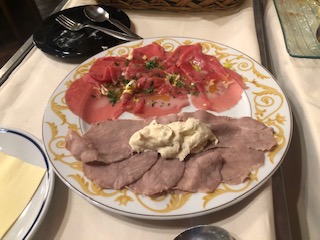
3. First Course: Top 3 dishes to try
3.1 Agnolotti del Plin al sugo d’arrosto
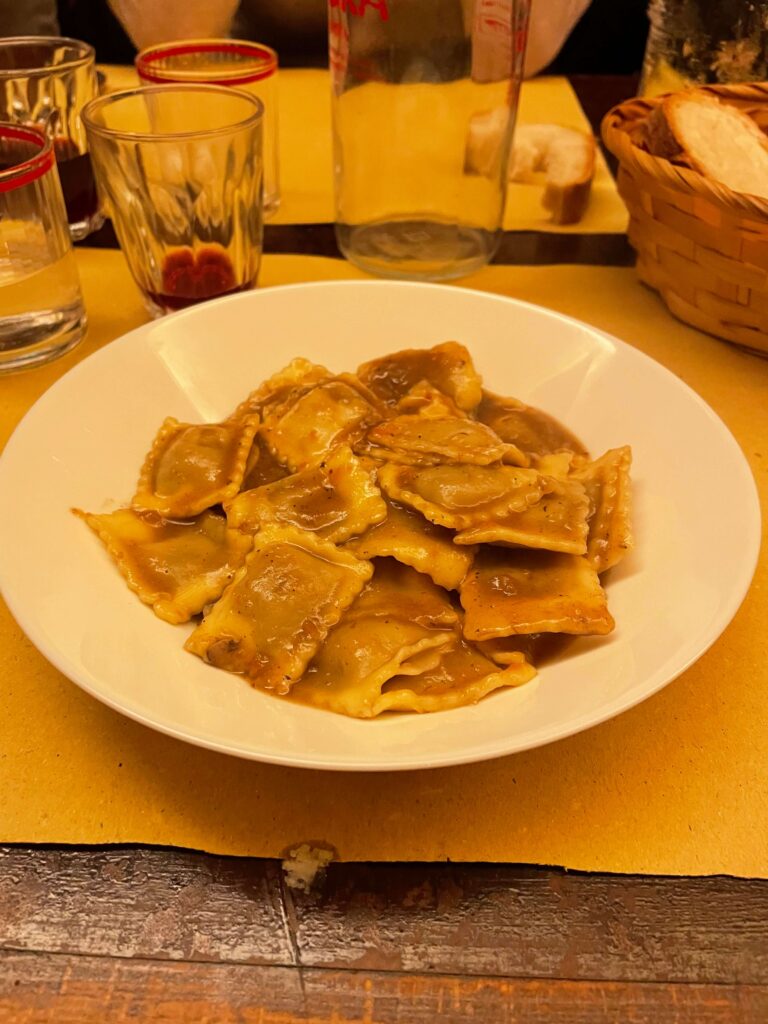
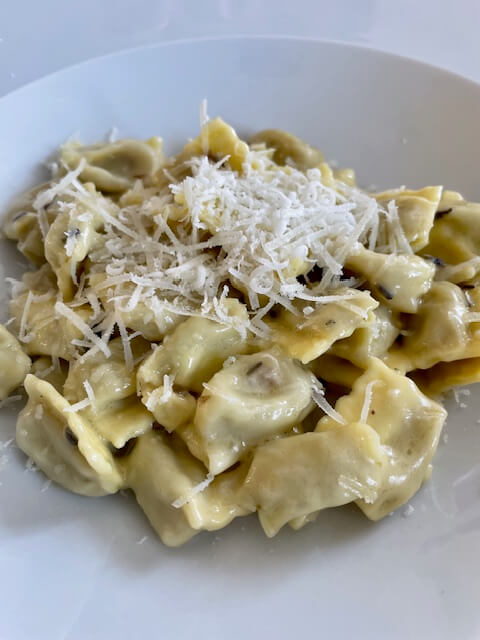
This is Agnolotti pasta covered with roasted meat sauce. This type of sauce is very traditional of the Region.
Agnolotti are a traditional stuffed fresh pasta originally from Piedmont, typically filled with roasted meat or vegetables.
Agnolotti vs Agnolotti del plin?
The most popular version of Agnlotti is the one represented in the picture on the left: squared shaped and bigger in size. This version is now present across all Italy.
The “agnolotti del plin” are the ones that you see in picture on the right. They are characterized by their rectangular shape and most importantly by their tiny size which requires a high skillset to put together. They are both really nice but I suggest you to try the latter one as it is really hard to find outside of Piedmont.
The best way to enjoy agnolotti is “al sugo d’arrosto” which means covered in a rich beef broth sauce prepared with the juices released from roasted meat. An alternative typical way to try them is “burro e salvia” which means with a sauce made of only butter and sage.
3.2 Tajarin al ragu di salsiccia di Bra
Tajarin is a home-made egg-pasta Typical of Piedmont and difficult to find outside the region.
It is resembles a bit the tagliatelle in terms of shape but they are thinner and a bit thicker as they are 100% hand made. Their yellow color is quite strong due to the egg yolk used in the dough.
My favourite sauce to eat Tajarin with is with a ragu made of “Salsiccia di Bra”. This is the same sausage described in the starters above which is now softened and cooked in the fresh tomato sauce.
However, you can find them also covered with local cheese which is extremely delicious.
Local tip: if you want to try the best first course dish (agnolotti or tajarin) I strongly recommend to go to Arcadia restaurant!
3.3 Gnocchi al Castelmagno
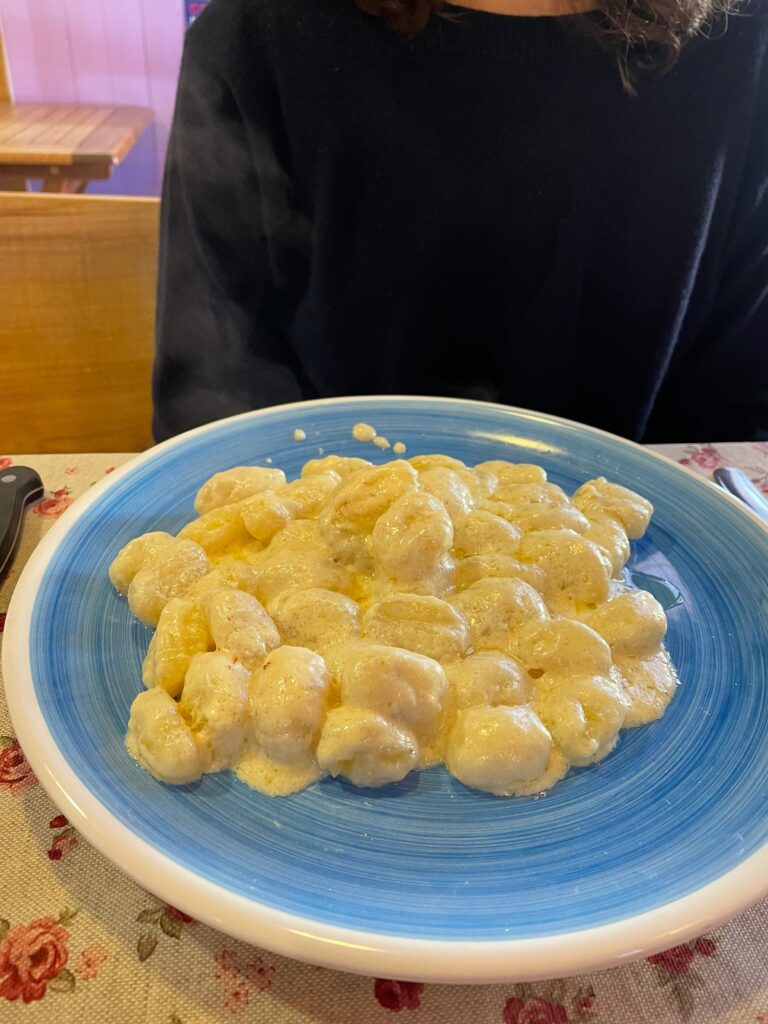
This is probably the best way to eat your gnocchi, covered in Castelmagno sauce which is a cheese typical from the area. Not much to say here, it is pretty straightforward.
4. Second course: The one and only
4.1 “Brasato al Barolo”
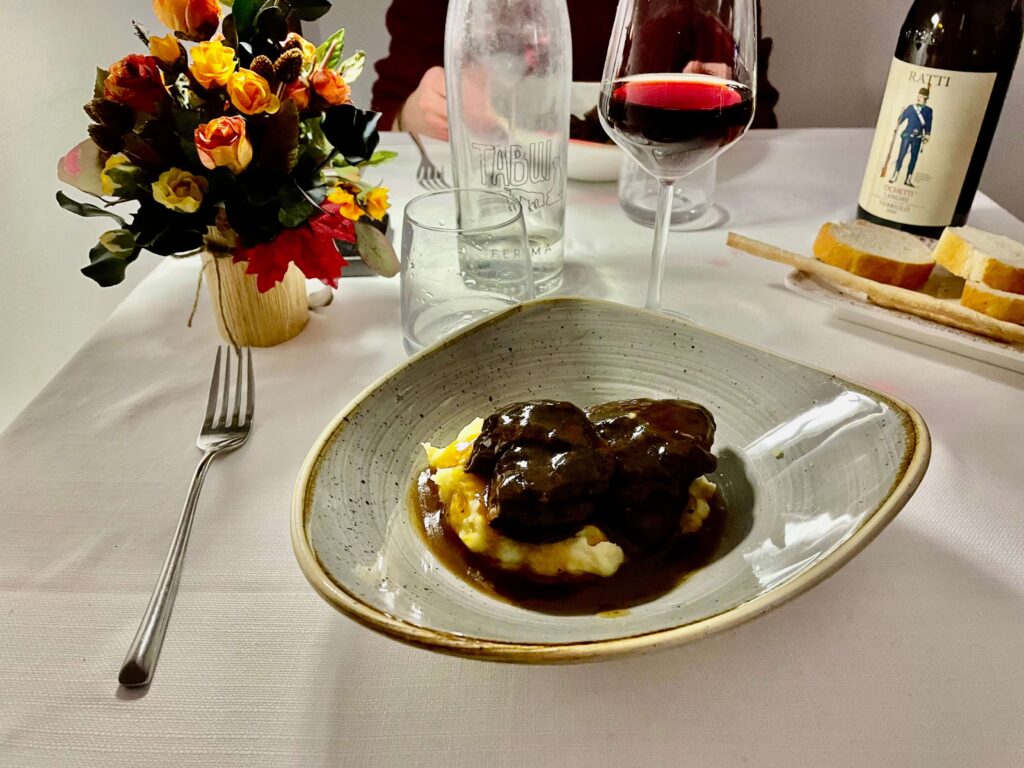
This is beef slowly cooked in the famous Barolo wine.
If there is one second course dish which you should try is definitely the “Brasato al Barolo”. This is Beef cooked until meltingly tender in the prestigious Barolo wine, a famous wine from the region. Normally served next to polenta or mashed potatoes. Truly delightful, not much to add.
5. Desserts & Sweets: top 5 to try
5.1 The Bonet
This is a caramel and chocolate pudding enriched with crushed Amaretto cookie and rhum. Impossible to find outside Piedmont.
5.2 The Zabaione
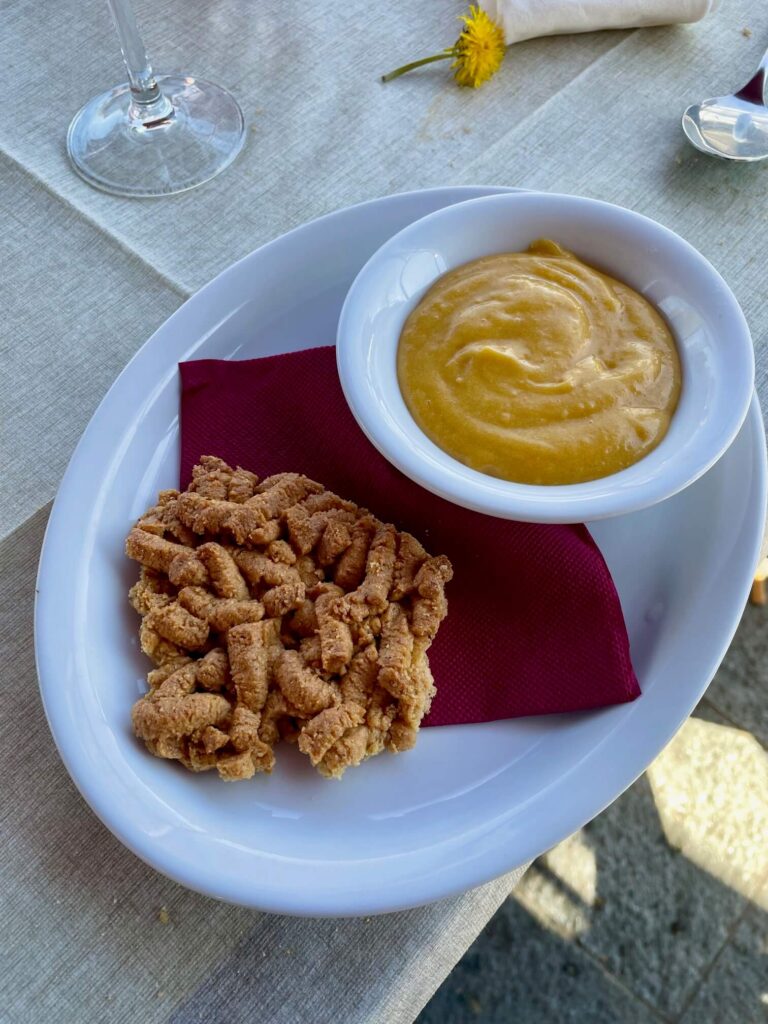
It is a thick & tasteful cream made of egg yolks, sugar and sweet wine.
Zabaione can be served either warm as a dessert in which case it is made on the spot or as a garnish for sweets and cakes. For example, you may find several “cannoli” in the pastry shops filled with Zabaione.
Bit of History: Zabaione (also written Zabajone or Zabaglione) originated in Turin in 16th century in honour of Saint Pasquale Baylon, from which the name was created. As a matter of fact, from San Baylon you get to Sambayon which is very similar to the way this dessert is called in Piedmontese dialect (sanbajon).
5.3 The Panna cotta
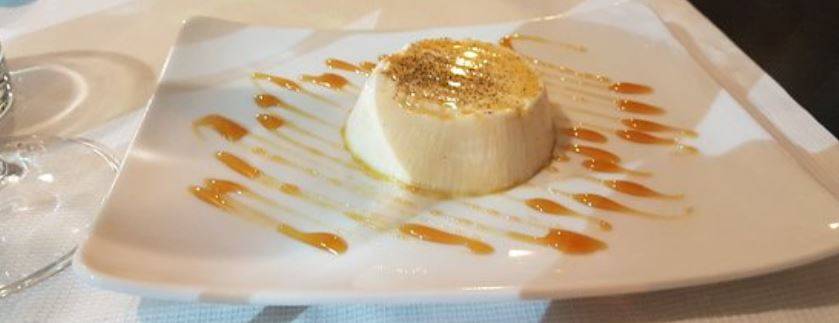
Everyone knows Pannacotta, it is pudding made of sweetened cream and vanilla. Not everyone knows it is originally from Piedmont.
Panna cotta is a traditional Italian dessert created in the Piedmont region, it is essentially a sweet custard made of cream, milk and sugar typically paired with caramel or berry sauce.
5.4 Baci di dama
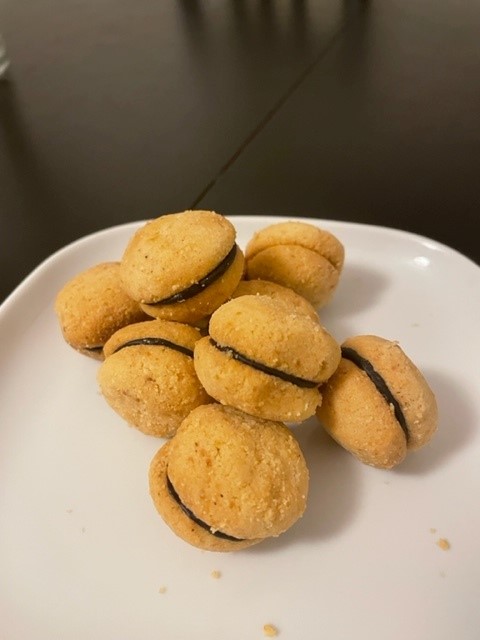
It’s basically two hazelnut cookies held together by a layer of dark chocolate.
Baci di Dama are cookies which originated over a century ago from the Piedmont region (Tortona specifically). You can find these very easily in any café or pastry shop in Turin (not in restaurants though).
Fun Fact: in Italian literally means “lady kisses” because they are reminiscent of two lips kissing, held together by chocolate.
5.5 Marron glaces
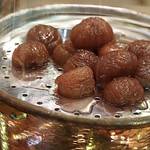
Marron glace’ are a delicacy that goes back to the 16th century which originated in Northern Italy (Piedmont area) and Southern France where chestnuts trees are abundant. They are also called candied chestnuts as they are boiled in a sugar syrup.
Traditional dishes: NOT to try
The below traditional dishes I recommend not too try as they are really old style and too heavy. Nowadays nowhen really eats these. The bagna cauda I mentioned, the other two dishes are a mixture if offal food:
- Bagna Cauda
- Fritto Misto alla piemontese
- Finanziera
6. Wine suggestions
To enjoy a good meal to the fullest nothing is better that good wine. Piedmont is well known for its outstanding wine selection. Here are some tips to choose wisely!
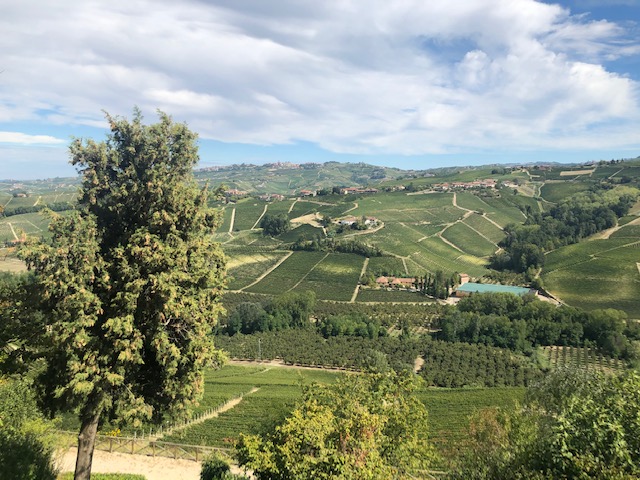
Red wine:
- Barolo: Known as the “king of wine” is one of Italy’s wine legends. Award winning red wine made of Nebbiolo grapes high in tannins with very long finish
- Barbaresco: Is another great example of Italy’s finest wines. It is made of the same Nebbiolo grapes and it also has a very long finish. Very rich in flavour but Barolo is probably the most tannic and rich of the two.
- Nebbiolo: this is a really good mid-tier red wine to keep in your radar. It comes from the same grapes as Barolo and Barbaresco but less rich in flavor as unlike the other two it doesn’t require a minimum of four years of aging in oak barrels. Great value for money.
White wine
- Roero Arneis: this wine comes from the DOCG area of Roero, it comes in pale gold color, floreal fragrances and has a medium to full body. If you want to go for a white wine during your stay in Turin I definitely recommend to try this one. It is a good wine and very reasonably priced.
Below you’ll find a website providing you even more details on the wines of Piedmont: https://www.winemag.com/2019/02/12/beginners-guide-wines-from-italys-piedmont
7. Organized Food Tours
If you’re interested in tasting some great local food while at the same time learn about the anecdotes behind them, probably the easiest is to simply opt for a guided food tour.
I put a few options with different price ranges below.
I have personally tried the “Turin Guided Food Tour with chocolate and wine tasting” and I felt it was a good option. The tour was 2 hours, we were given all of the below:
- One Bicerin, the famous hot coffee beverage typical of Turin
- Two small chocolate tastings in two different chocolate shops, where we tasted Gianduiotti and other local delicacies
- then we stopped for some tasty Focaccia & and crispy Farinata (you need to try farinata!)
- Lastly, we did an Aperitivo with cold cuts, crisps & 2 different wines (a White & a Red)
- The guide was really nice and shared some short explanation & anecdotes at each stop
Here’s some pictures that I took during the food tour so you have a better idea of what to expect.
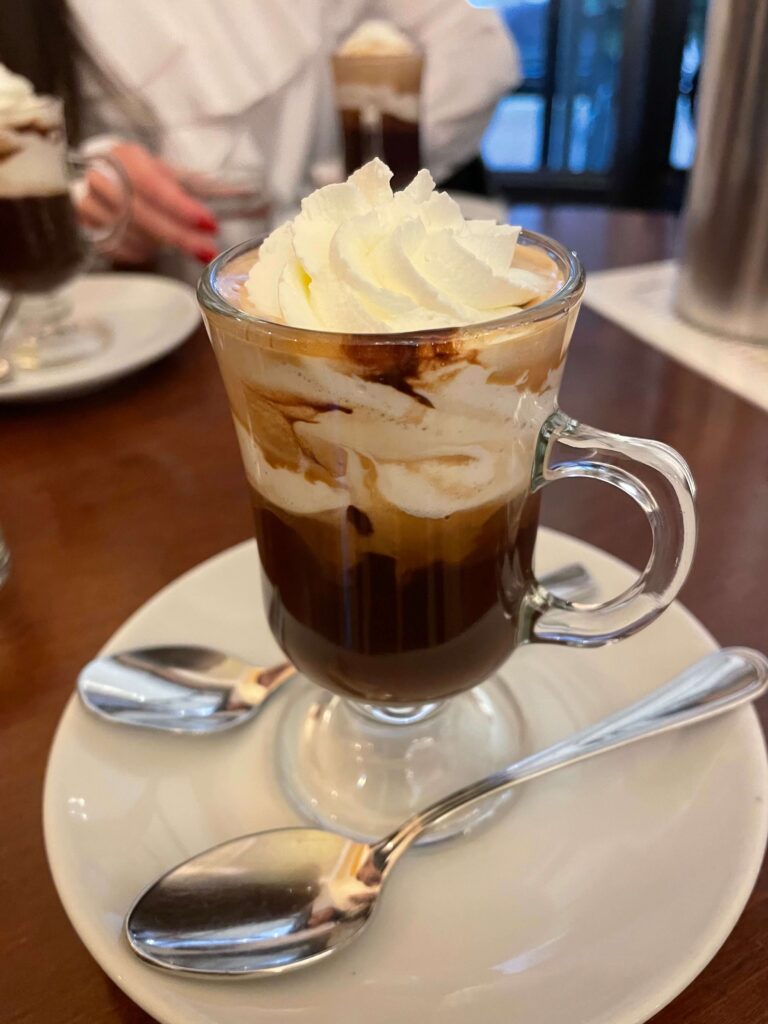
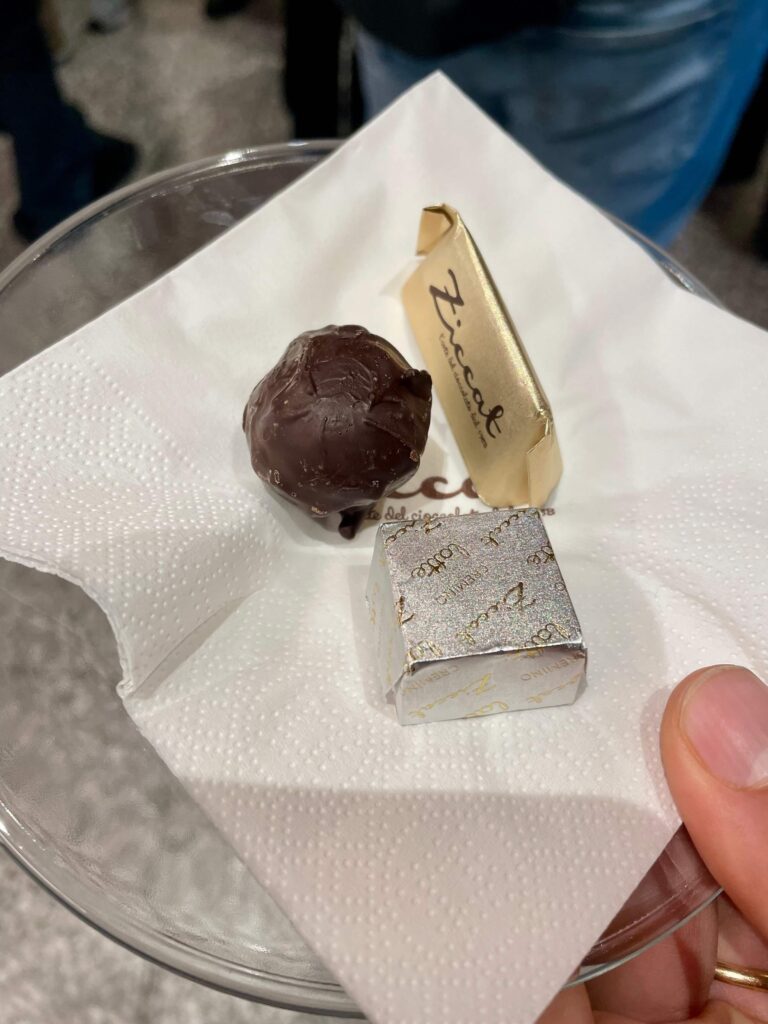

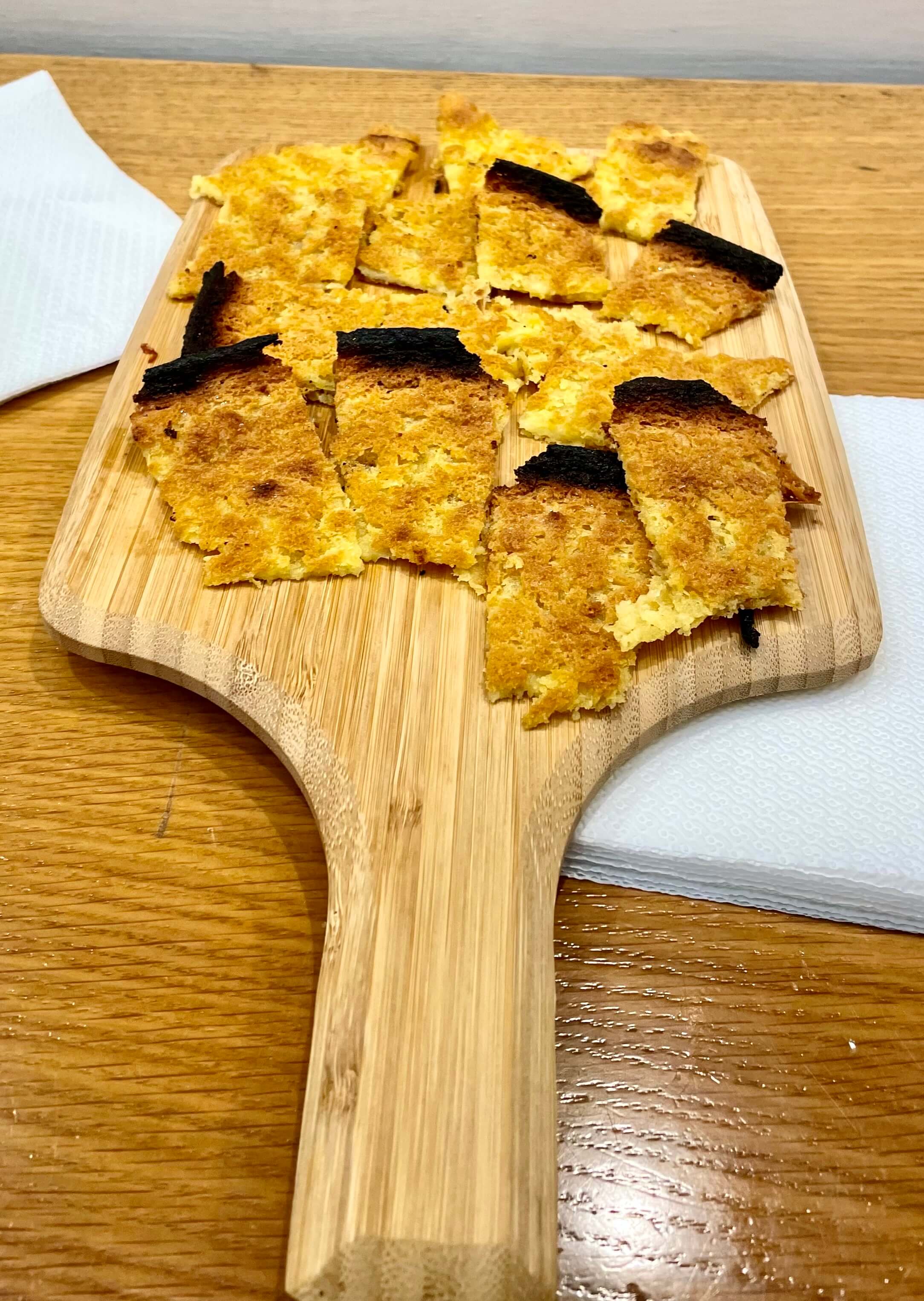
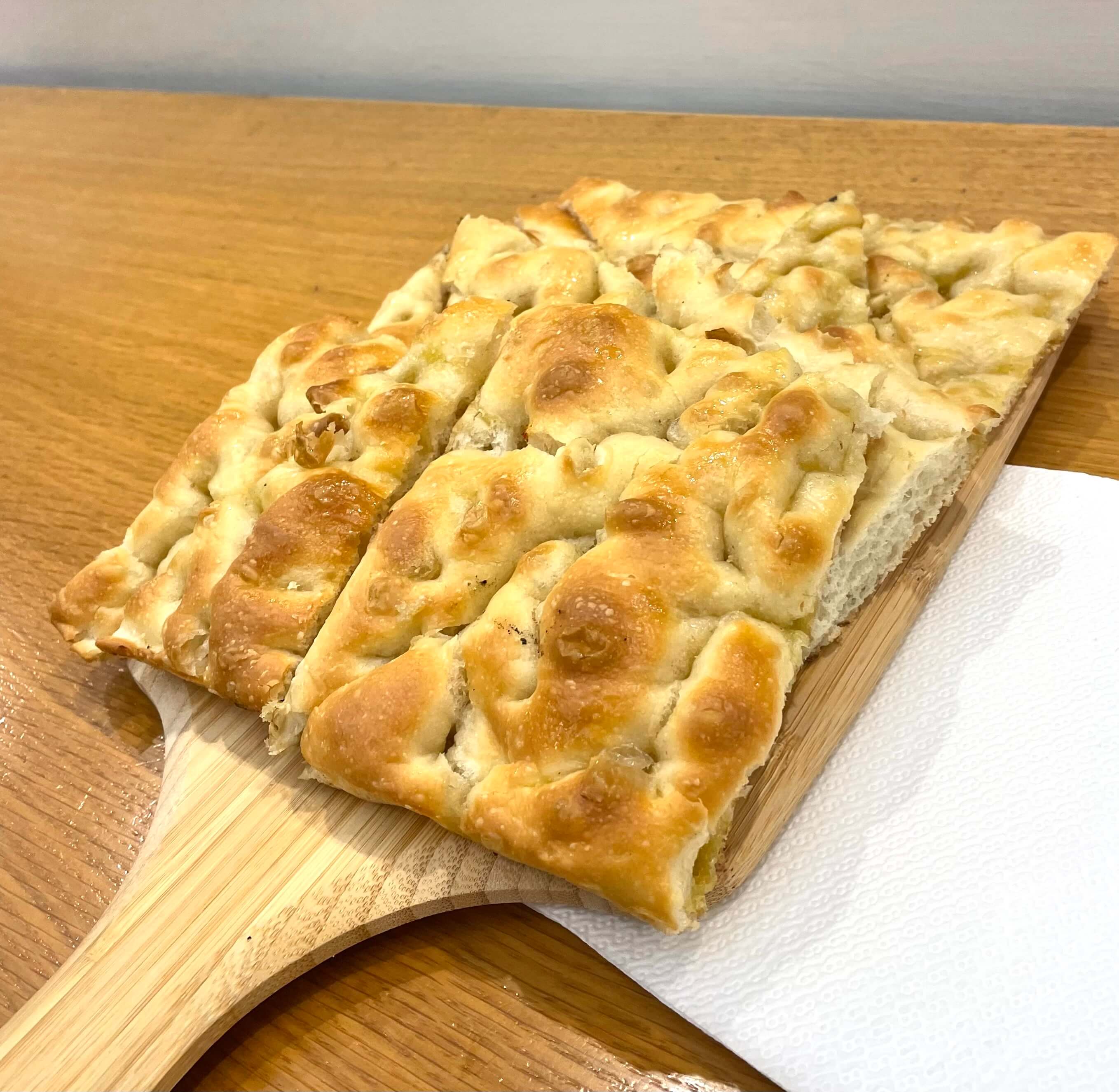
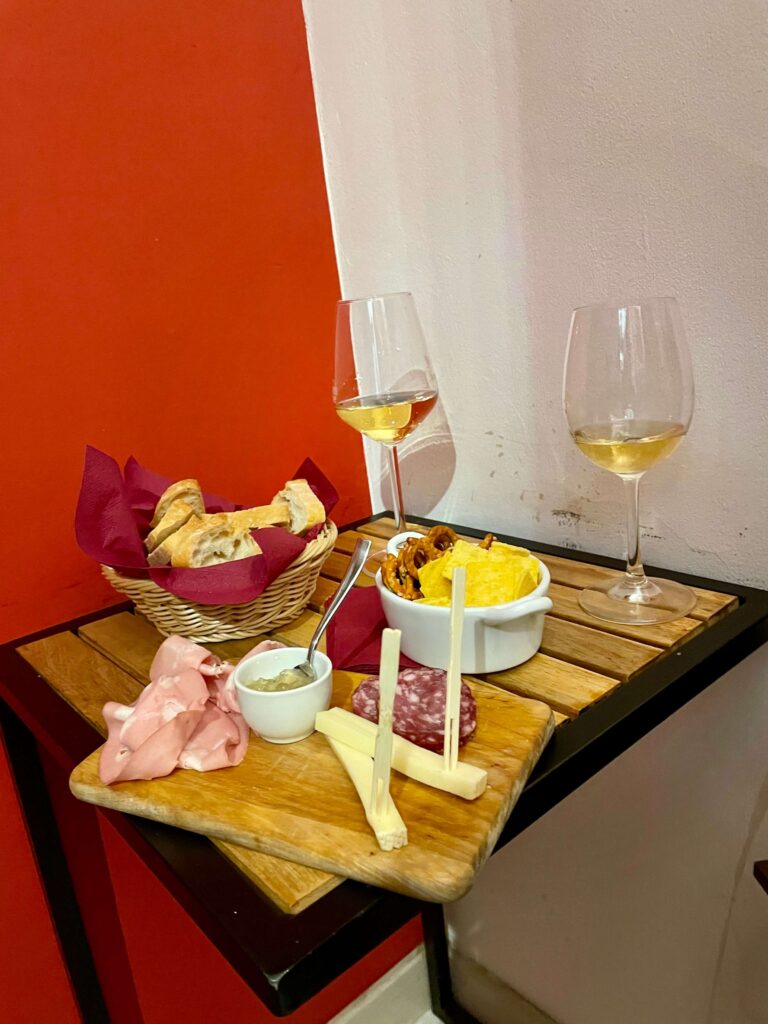
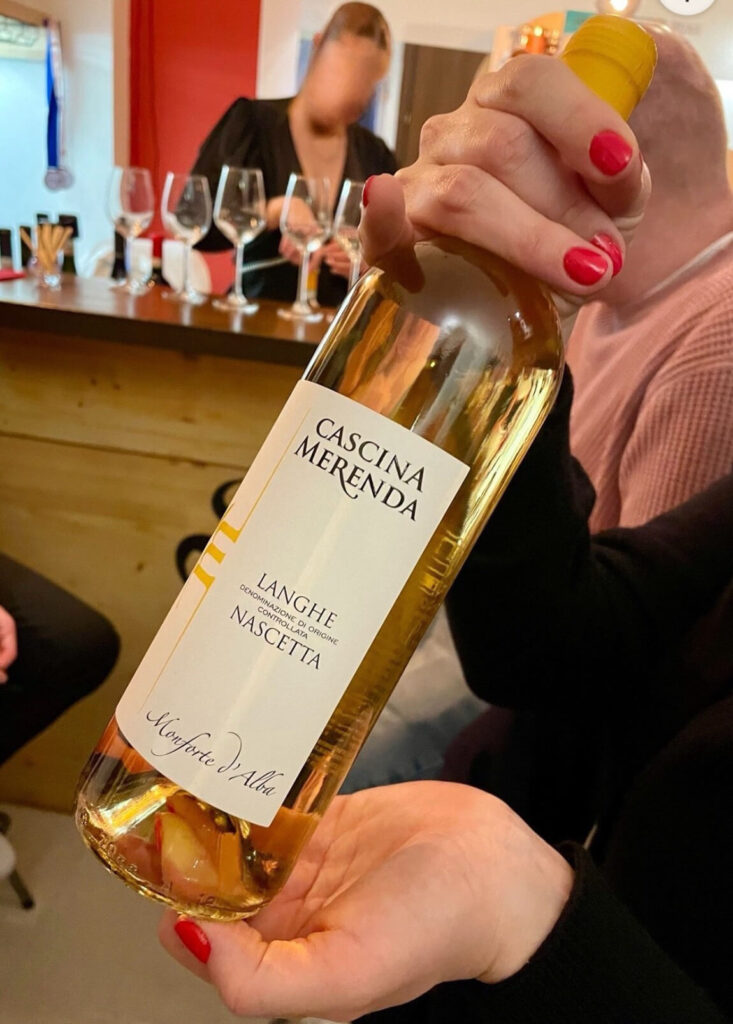
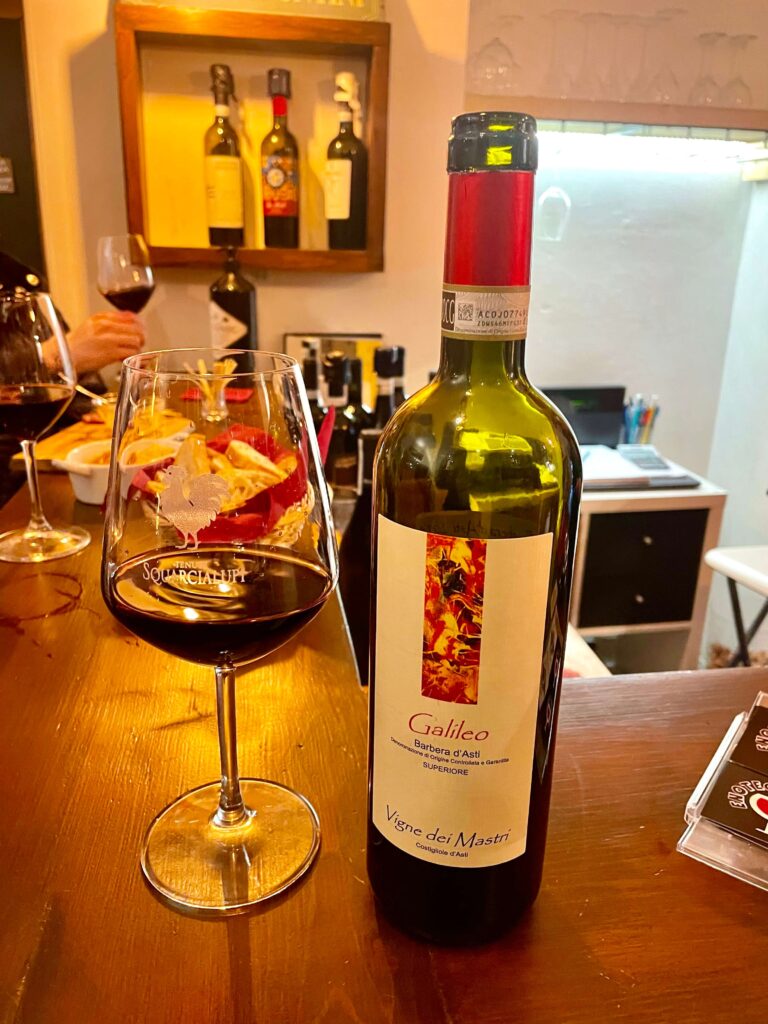
Let me point out that I will make a small commission at no extra cost for you in case you decide to book tours from the link below.
I truly hope you found this post helpful. Have fun in Turin!
